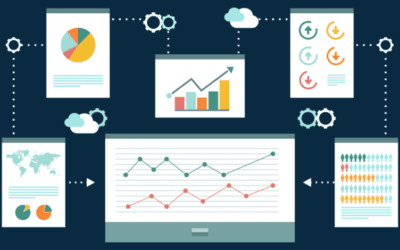Every metric has a story to tell. Dig in over a period of time, break apart all that goes into the metric calculation, join the dots and there you have your story. But then you also have to ACT – your success depends on what you do after you figure out the story. What do you need to do more of? What do you need to eliminate? With the budget season in progress, sales performance metrics are on my mind again. In this Accenture analysis of Sales Performance Optimization Study, sponsored with CSO Insights, sales leaders say their top priorities for the past year was increasing sales effectiveness (56 percent), followed by increasing revenues (52 percent) and improving up-selling/cross-selling (39 percent). The Operations team can play a big role in increasing sales effectiveness with their clear understanding of the various moving parts and inner workings that contribute to high sales performance. These insights can help determine which levers (metrics) can actually help improve sales efforts and align the sales organization to the business strategy.
When it comes to sales metrics, one size definitely does not fit all. The key is to select a good mix of lagging and leading indicators – a set that not only helps you to measure results but more importantly, gives you the ability to predict outcomes. Going beyond the standard booking or quota achievement vs. target, here are five other metrics that I believe go a long way in ensuring sales effectiveness:
Sales Performance Metrics #1 – Funnel or Opportunity Pipeline:
In the current quarter, there is not much you can do to increase sales radically but you can still implement steps to make the sales grow for the rest of the year if you know where to focus efforts. This metric helps determine the nature of funnel and sales expected in future quarters/months. Organize and record each opportunity the sales team is prospecting and assign them a status such as “qualified” or “suspect” or “proposal” along with an estimated value associated with each of them. Assign probability percentage to each status based on your past performance at each stage. The sales people can then prioritize their time according to the probability of a win (status) and the impact of a win (estimated value). This metric is a dynamic metric and will keep changing as new opportunities come in or old opportunities move out as delayed or lost. The value of sale multiplied by the status percentage gives estimated total sales that you can expect at any period in the future provided the opportunities and stages of each opportunity are diligently tracked and recorded.
Sales Performance Metrics #2 – Sales Mix:
Based on the sales strategy of the year, one can come up with different mixes or ratios that need to be tracked as metrics for the year. This is essentially categorizing your funnel into different fields – say by nature (new, renewals or farming), by market segment (products, services, maintenance), by demographics or geography (Americas, Europe, Rest of World), by channel (direct, indirect). The ratios are arrived at by dividing the mix value by total funnel value. This gives a view on how far your strategy is being implemented at the ground level or if there is a possibility of good returns on investment made in any particular area. The sales mix ratios help zoom in on decision areas and decision types and can change from time to time based on the granularity of information available. Again, here is where the operations team can play a big role in ensuring that data strategy, quality and integrity is maintained in all systems – and garbage in-garbage out decision making is avoided.
Sales Performance Metrics #3 – Cost of Sales to Revenue Ratio:
This is a metric that used wisely and measured as a trend over time can show the overall efficiency of the sales team by segment, market or any other growth area that is in the strategy plan. The calculation should be based on the total costs for the selling efforts of each area of business. Total Sales Costs includes salaries, commissions and expenses for sales management, sales people and sales support. Divided by the revenue in the same period from the area of business, you can arrive at the ratio. I like this metric better than sales productivity (Revenue by number of sales people) as, in a global organization, salaries vary across regions, so does the revenues based on the nature of the business area. Measured over a period of time, it can give useful insights into where sales investments in terms of people is needed to get higher revenues, how long it takes for additional sales headcount to generate revenues and other such trends.
Sales Performance Metrics #4 – Conversion Rates and Ratios:
Conversion rates are very useful in identifying sales methodology or process issues, including poor proposal preparation, inaccurate forecasting or funnel categorization efforts, insufficient research into customer buying behaviors, core strength and weakness of sales persons. Conversion rates need to be measured at various steps of the sales process – the most common one is the win ratio –what percentage of qualified opportunities get closed as won. Other useful rates could be the percentage of deals that get lost after responding to proposals, percentage of qualified opportunities that show no movement over a long period of time, percentage of opportunities that are lost without any reason for loss – to pin point where the improvement is needed in the process and is useful in the qualification and prioritization of opportunities.
Sales Performance Metrics #5 – Gross Margin % by Sales Person:
This metric is a bit controversial as it is not generally used to measure performance of the sales team nor used in sales incentive plans. The general idea is that sales team is responsible for getting in the bookings and revenue and the rest of the organization has to ensure that margins are made. I am of the view that unless we track and reward sales people based on not only the volume of the bookings but also the quality of bookings, the organization cannot achieve its margin mandate. Discounting practices, pricing, “value” selling, terms and conditions on scope, timelines, milestones all affect gross margins and sales team has the highest influence with the customer to ensure favourable terms in these areas. So why not measure not only the actual gross margins of revenue by sales person but also future margins based on the funnel details? This will help the entire organization to plan and also help the sales teams to make the “right” (read profitable) sales.
“Gut feel” is all good but you also need the right data and indicators to validate your gut feel. On the other hand, no sales leader will want to go overboard on metrics and measurements that put additional load on the bandwidth of their teams taking time away from “selling” to filling in all sorts of data requirements. So, it is important to choose the right set and number of metrics to help focus strategy and efforts based on not only past performance but also through a rationalized view into the future to enable course corrections as necessary for the success of the business before it is too late.
So what is your story? What sales performance metrics do you think are must have leading indicators to improve forecasting accuracy? What are some of the more creative sales metrics that you have seen ? I would love to hear back and learn from you.
Pic courtesy: http://www.flickr.com/photos/ericparker/1537862310




